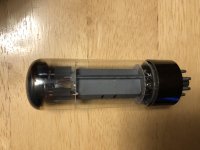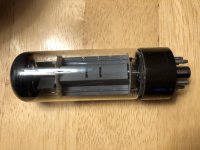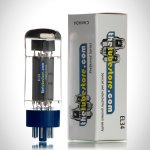Building the Shuguang EL34-B Vacuum Tube - Part 1 - YouTube
Screen cooling fin is mentioned in the above video.
Screen cooling fin is mentioned in the above video.
99% It is a Mullard (Philips family).
Typical Mullard are the; micas, the 'point' on the pins, the getter bowls, the anode 'slots' and welding. Some do have little 'fins' on the anode rods to stabilise the micas.
Is there a hole in the middle of the spigot?
Is there any evidence of lettering on the glass close to the black base?
Typical Mullard are the; micas, the 'point' on the pins, the getter bowls, the anode 'slots' and welding. Some do have little 'fins' on the anode rods to stabilise the micas.
Is there a hole in the middle of the spigot?
Is there any evidence of lettering on the glass close to the black base?
All the pins are present and yes there was a near invisible code etched into the bottom of the glass B3H4.
B = Blackburn factory
3 - 1963 or 1973 depending on revision number xf?
H = August
4 = 4th week
- Status
- This old topic is closed. If you want to reopen this topic, contact a moderator using the "Report Post" button.
- Home
- Amplifiers
- Tubes / Valves
- EL34 identification


